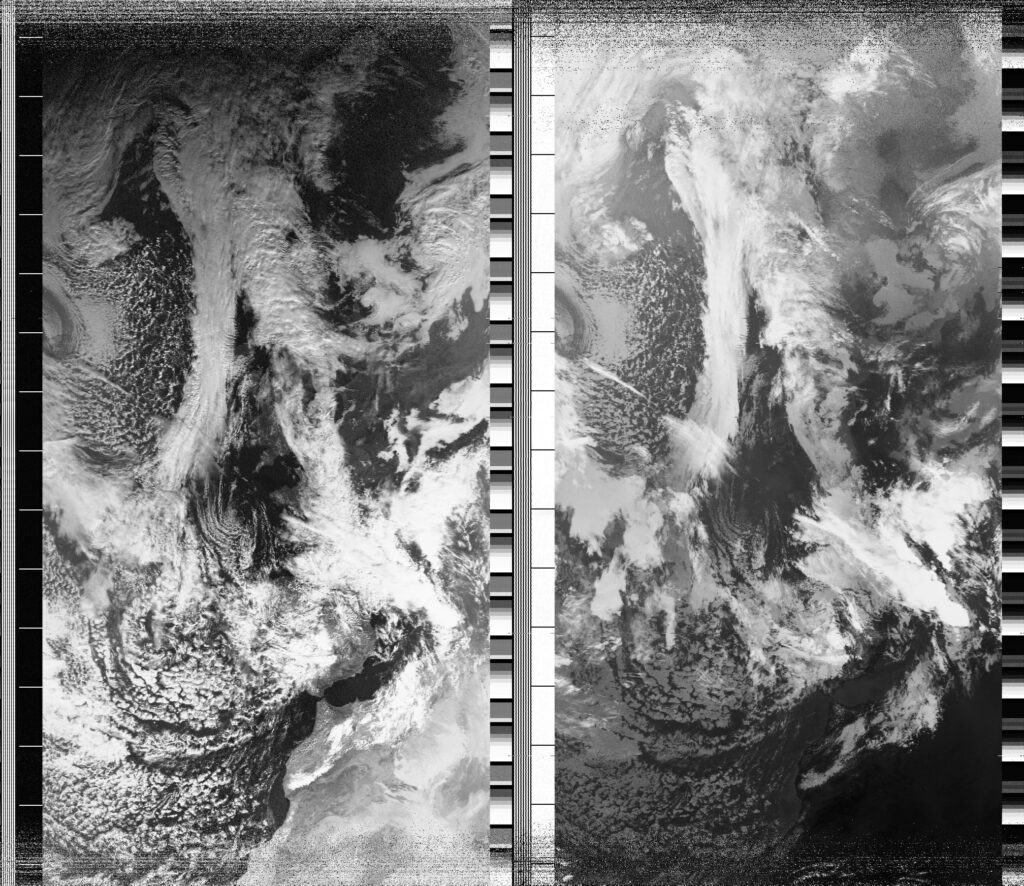Local Date
26 October 2024Local Time
12:36Location
Hackney Downs, LondonCountry or Territory
United KingdomContributor
Sasha EngelmannSatellite
NOAA-18Radio Callsign
Archive ID
Coordinates
The fallen brown and golden leaves from plane trees are the brightest thing in the park today, as a grey and muted bank of cloud wraps London. I keep thinking of an interview I read with Stefan Rahmstorf, an oceanographer and climatologist who is well known for studying 'Amoc' or what is now known as 'Amoc breakdown'. The article in the Guardian explains: "Amoc, or the Atlantic meridional overturning circulation, is a system of ocean currents that brings heat into the northern Atlantic. Warm surface water from the tropics flows north and releases its heat in the subpolar Atlantic, south of Greenland and west of Britan and Ireland. Then it cools and sinks to a depth between 2,000m to 3,000 m before returning south as a cold current. Amoc is one of our planet's largest heat transport systems, moving the equivalent of 50 times the human energy use, and it has a particularly strong impact on the climate in Europe".
This description of great waters rising and sinking, and carrying heat across the planet, is captivating. Yet scientists like Rahmstorf suspect Amoc could be slowing down and even about to stop. Apparently "the most ominous sign is the cold blob over the northern Atlantic. The region is the only place in the world that has cooled in the past 20 years or so, while everywhere else on the planet has warmed - a sign of reduced heat transport into the region". There is also "excessive heating along the east coast of North America" which could be another sign of a slowing Amoc current that drifts closer to shore, and the "reduction of salt content of seawater" especially in the "blob region". A less salty 'blob' is harder to sink, and therefore harder to mix into the Amoc cycle. According to Rahmstorf, there is a 50/50 chance that Amoc stops in our current century. The collapse of Amoc will have global effects: the sea level of the Atlantic will rise by half a metre, the tropical rainfall belt will shift south, leading to floods in places not adapted to so much rain, and droughts elsewhere, and less CO2 would be taken up by the oceans, further driving global warming. Rahmstorf explains that all of these changes are poorly modelled by scientists and reported on by the IPCC because they are considered extreme, but at the same time they are probable, and on a timescale that humans alive today may witness.
As the satellite image I am capturing loads line by line, I peer into the darkness of the North Atlantic. I think about the word 'Amoc' and how it can also have connotations of 'going astray' or 'running wild'. I wonder whether I can see the 'cold blob' west of Ireland, and what one might see in that part of the ocean in decades to come.




